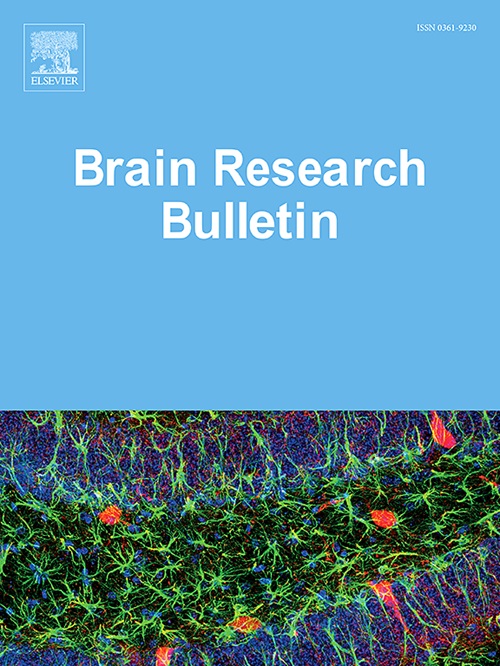适度紫外线照射通过激活前脑皮质-基底外侧杏仁核通路,改善慢性应激诱发的焦虑和社交障碍
IF 3.5
3区 医学
Q2 NEUROSCIENCES
引用次数: 0
摘要
本文章由计算机程序翻译,如有差异,请以英文原文为准。
Moderate UVB exposure ameliorate chronic stress-induced anxiety and social impairment by activating mPFC to basal lateral amygdala pathway
Ultraviolet radiation B (UVB), the most biologically active ultraviolet ray in sunlight, exert broad effects on physiological and behavioral functions, including circadian rhythm, mood, and cognition. However, its underlying mechanisms are still unknown. In this study, in order to verify effects of UVB on anxiety and social behaviors, C57BL/6 mice receiving 2 h UVB exposure after chronic restraint stress were used. UVB exposure improved anxiety-like behaviors and social activities in normal and restraint stressed mice. Meanwhile, UVB exposure increased the neural excitability in mPFC according to cFos staining and electrophysiology results. And benefits of UVB exposure could be blocked by chemogenetical inhibition of mPFC or inhibiting mPFC to basal lateral amygdala (BLA) pathway. In conclusion, we identify UVB exposure ameliorate chronic stress-induced anxiety and social impairment by activating mPFC to BLA pathway. The series of research may lead to the development of UVB as a novel therapeutic approach for treating anxiety and social avoidance in the future.
求助全文
通过发布文献求助,成功后即可免费获取论文全文。
去求助
来源期刊

Brain Research Bulletin
医学-神经科学
CiteScore
6.90
自引率
2.60%
发文量
253
审稿时长
67 days
期刊介绍:
The Brain Research Bulletin (BRB) aims to publish novel work that advances our knowledge of molecular and cellular mechanisms that underlie neural network properties associated with behavior, cognition and other brain functions during neurodevelopment and in the adult. Although clinical research is out of the Journal''s scope, the BRB also aims to publish translation research that provides insight into biological mechanisms and processes associated with neurodegeneration mechanisms, neurological diseases and neuropsychiatric disorders. The Journal is especially interested in research using novel methodologies, such as optogenetics, multielectrode array recordings and life imaging in wild-type and genetically-modified animal models, with the goal to advance our understanding of how neurons, glia and networks function in vivo.
 求助内容:
求助内容: 应助结果提醒方式:
应助结果提醒方式:


